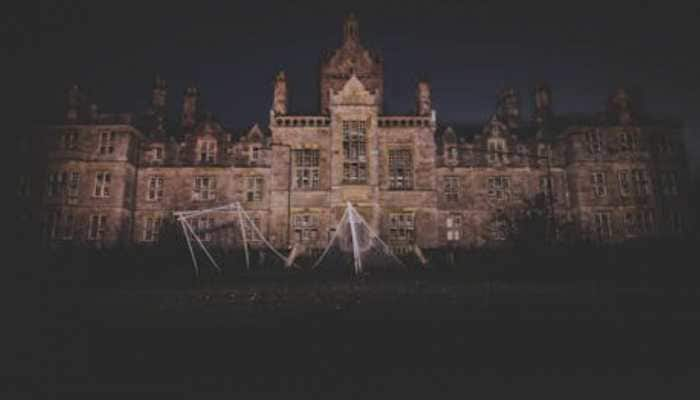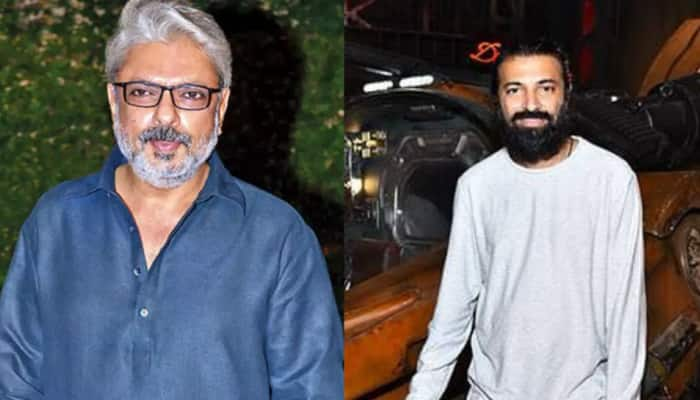INKredible India: The story of 2009 Lok Sabha election - All you need to know
United Progressive Alliance managed to get a second term in power with Manmohan Singh at the helm once again.
Trending Photos
)
Lok Sabha election in 2009 was conducted after five years of the Manmohan Singh-led government of United Progressive Alliance. Congress had beaten all odds – and predictions – to lead the government after the 2004 election and in the five years since, had managed to keep its alliance partners tightly stitched to provide a stable government.
Manmohan Singh was the unlikely candidate as PM but his elevation had been decided upon by the Congress high-command after Sonia Gandhi had declined to take up the post. It is reported, however, that Sonia had quite the unanimous say in picking Manmohan Singh as the PM. Seen and regarded widely as a non-controversial figure, the economist-turned-politician led a steady ship although it is alleged that he was only a de facto PM. His first cabinet had ministers from five different parties – apart from Congress, and had the outside support of the Left Front, Bahujan Samaj Party and the Samajwadi Party.
Gone were the years of political bickering between alliance partners with the National Democratic Alliance under Atal Bihari Vajpayee giving a good example of a solid leadership between 1999 and 2004. The period saw India gaining in strength economically and Manmohan Singh would take over from where Vajpayee left.
The first five years of the UPA government – unlike the next five years – saw India largely faring well in all sectors – social, economic and political. India’s GDP growth rate had already touched eight per cent under Vajpayee but it leapfrogged into nine per cent under Manmohan. Supporters of Congress till date point to the global economic crisis of 2008 when India somehow managed to absorb the impact better than most other countries in the world. In 2008, India’s GDP growth rate was 6.7 per cent.
India also managed to increase its share of exports under the Manmohan government, education was expanded, employment schemes like NREGA were brought in and the Right to Information Act was passed. These may not have been the outstanding achievements but in the tumultuous five years – especially from 2008, the UPA fared reasonably well.
There were, however, challenges too and the biggest test of the government at the time came from within its own. The Indo-US nuclear deal became a major friction point between UPA and opposition parties as well as within the UPA itself. The Left Front was staunchly opposed to the deal which, to summarise an extremely complex matter, sought to grant an exemption to India from the Nuclear Suppliers Group (NSG). It was touted as a way in which India could procure materials required for civilian nuclear purposes. The opposition to it was essentially because the Left Front – providing crucial outside support to the government – had allegedly not been consulted before the deal was signed by Manmohan and US President George W Bush. The opposition was also because there was a suspicion that India’s nuclear installations would be opened up for international scrutiny. Apart from the Left Front – which eventually withdrew support to the UPA, the Bharatiya Janata Party was also responsible for leading the attack on the government at the time.
The Manmohan Singh government, however, survived and managed to complete full five years in office before the fresh election was called.
Election 2009 – Status of States:
The Lok Sabha election 2004 was conducted across 35 states and union territories in India. Three more states – Jharkhand from Bihar, Uttaranchal (now called Uttarakhand) from Himachal Pradesh and Chhattisgarh from Madhya Pradesh – had been formed as separate states in 2000.
The state and union territories which saw voting in 2004 Lok Sabha election were:
Andhra Pradesh
Assam
Arunachal Pradesh
Bihar
Goa
Gujarat
Haryana
Himachal Pradesh
Jammu and Kashmir
Karnataka
Kerala
Madhya Pradesh
Maharashtra
Manipur
Meghalaya
Mizoram
Nagaland
Orissa
Punjab
Rajasthan
Sikkim
Tamil Nadu
Tripura
Uttar Pradesh
West Bengal
Andaman and Nicobar Islands
Chandigarh
Chhattisgarh
Jharkhand
Uttarakhand
Dadra and Nagar Haveli
Daman and Diu
National Capital Territory of Delhi
Lakshadweep
Pondicherry
Political parties in the fray:
There were seven national parties and another 34 state parties which contested the Lok Sabha 2009 election, apart from many other registered (unrecognised) parties. These were:
National Parties:
Bharatiya Janata Party
Bahujan Samaj Party
Communist Party of India
Communist Party of India (Marxist)
Indian National Congress
Nationalist Congress Party
Rashtriya Janata Dal
State Parties:
Arunachal Congress
All India Anna Dravida Munnetra Kazhagam
Asom Gana Parishad
All India Forward Bloc
All India Trinamool Congress
Assam United Democratic Front
Biju Janata Dal
Dravida Munnetra Kazhagam
Indian National Lok Dal
Janata Dal (Secular)
Janata Dal (United)
Jammu and Kashmir National Conference
Jammu and Kashmir National Panthers Party
Jammu and Kashmir Peoples Democratic Party
Jharkhand Mukti Morcha
Kerala Congress
Kerala Congress (M)
Lok Jan Shakti Party
Maharashtrawadi Gomantak
Marmalarchi Dravida Munnetra Kazhagam
Manipur Peoples Party
Muslim League Kerala State Committee
Nagaland Peoples Front
Pattali Makkal Katchi
Revolutionary Socialist Party
Shiromani Akali Dal
Sikkim Democratic Front
Save Goa Front
Shivsena
Samajwadi Party
Telugu Desam
Telangana Rashtriya Samiti
United Democratic Party
Uttarakhand Kranti Dal
Election 2009:
Lok Sabha election 2009 was held between April 16 and May 13 in five phases and across 543 constituencies. The election also witnessed re-drawn parliamentary constituencies following the recommendations of the 2002 Delimitation Commission of India.
There were 8,070 candidates in this election – the highest since the record 13,952 candidates in the 1996 edition of Lok Sabha election. Deciding their fate were over 71 million eligible voters across 8,30,866 polling stations in the country.
The Congress went into top gear with its campaign pitch in a bid to return to power. While there was some speculation that Rahul Gandhi may be propped as the PM candidate, it was later announced by Sonia that Manmohan Singh would continue if UPA returned to power.
And returning to power was the No. 1 objective.
Congress’ 20-page manifesto spoke as much of the achievements in the past five years as it did about the plans and vision for the next five.
“It is only the Indian National Congress that is anchored in the larger vision of India as a nation, while at the same time being sensitive to regional and local sentiments. It is only the Indian National Congress that has demonstrated its commitment to a strong Centre, to strong States, and to strong panchayats and nagarpalikas. India’s political system must have space for institutions at each of these three levels. Each has a vital and specific role to play.”
The manifesto also took aim at the BJP, calling it a party of narrow communalism. It also termed the possibility of a ‘Third Front’ as a ‘recipe for chaos.’
Amongst its promises were security, police reforms, health security for all, implementation of nation-wide skill-development program, farmer welfare, affordable education, empowerment of weaker sections in the society and participative governance.
The BJP manifesto, on the other hand, also spoke of nation-building while attacking the UPA government.
“Lakhs of people in the unorganised sector have lost their jobs over the past year. Skilled workers are losing their jobs in the organised sector. This is far worse than unemployment because it impoverishes families dependent on assured income and dampens the national spirit. The worst hit are India’s youth, especially those who are looking forward to enter the job market. The Congress-led UPA Government has gifted them with a bleak future. As for the poor, they feel abandoned by the Congress-led regime.”
The party also promised, among others, generating jobs, National Identity Cards for all, hastening defence purchases, food security, energy security, boost to infrastructure and a strong and cooperative foreign policy.
The assurances and promises of the BJP failed to find a connect with the voters as Congress managed to exceed expectations by winning 206 seats on its own merit. Its performance in Andhra Pradesh (33), Uttar Pradesh (21), Rajasthan (20), Maharashtra (17), Kerala (13), Madhya Pradesh (12) and Gujarat (12) crafted a solid performance. Cushioned by a total number of 261 seats under the UPA umbrella, Manmohan roared back to power for another term.
The BJP, in contrast, collapsed from winning 138 seats in 2004 to 116 seats under LK Advani’s leadership.
The Third Front fared reasonably well with the likes of Bahujan Samaj Party (21) and AIADMK (9) shining through.
The process of reaching out and shaking hands was never going to be much trouble for Congress from here on. What would cause trouble and eventually spell doom for the party was the brazenness of corruption that would follow in the coming five years which became a key factor in how Lok Sabha election 2014 played out five years later.
Stay informed on all the latest news, real-time breaking news updates, and follow all the important headlines in india news and world News on Zee News.
Live Tv







)
)
)
)
)
)
)
)
)
)
